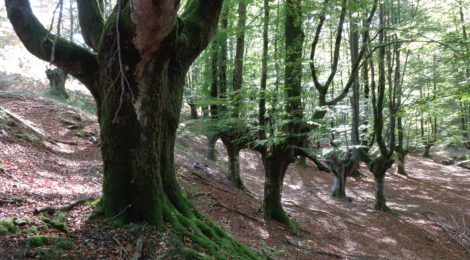
Ancient Vasconic Tree Worship
Languages: [ENG] | [EUS]
The Aquitanians were the linguistic ancestors of the modern day Basque-speaking people. They lived over a vast area in Southwest Gaul during Roman Times and left a considerable amount of votive inscriptions in Latin with indigenous names, generally belonging to people and gods. It is thanks to that onomastic material that experts were able to identify the language spoken by the Aquitanians as closely related to Basque.
We know little of this people, except for what the Romans tell us, but the names they engraved on stone speak volumes about what their beliefs may have been like.
Most of these inscriptions have been found in Eastern Aquitania, which in all likelihood was the most Romanized area, a fact that accounts for the extensive use of writing in their society, unlike their western counterparts.
These stones were small altars to honour the dead or the gods, in the common Roman fashion. We will now focus on some names of the local gods featured in these altars.
If we analyse the etymological origin of Aquitanian gods, we’ll learn that their religion was mainly based on Nature worship.
Mountains and trees feature prominently, but also other landscape features (rivers, caves) and animals make their appearance, as well as one “God of Lightning”, Fulguri Deo [dative case] in the Latin inscription.
Among the possible mountain deities we should list Ageio, whose name comes up 7 times in different altars, once accompanied by ‘et montibus‘ (and to the mountains in Latin), with another one being ‘Ageioni Bassari[o] deo‘, whose second component should be related to Basque baso (forest). In fact, the concept of baso generally encompasses that of forested mountain (slope) and so mountains and forests are linked in Basque expressions, as opposed to flatland and fields.
Proof of this is also the fact that the Roman forest god Silvanus is also inscribed in other 7 altars, twice together with et montibus, and twice with the Roman goddess Diana. These Roman names may have stood for local gods, whose names have not been recorded. Hints towars these cults may remain in the Basque folktale characters of Basajaun and Basandere, the Lord and the Lady of the Forest, who are also known in other places along the Pyrenees (in Aragon Basajarau).
Other gods possibly related to mountains might have been Erge and Erriape, with over a couple of dozen altars devoted to each of them; their names may include an initial morpheme linked to Basque harri ‘stone’.
In any case, the Proto-Basque root for mountain or crag is apparently not attested in these inscriptions, but is found all throughout the old linguistic domain. Check the descendents of this root *han in this article; the current Basque word for mountain (mendi) is a Celtic loanword in my opinion.
That trees and mountains figure together in the Vasconic worldview is confirmed by the alleged etymology of the Basque word for tree, that is, zuhaitz or zuhain, in both cases consisting of zur (wood) + haitz/*hain (crag).
While the proper names of Mountain Gods are harder to identify, as they may refer to their qualities or to unknown placenames, the Tree Gods display clearly understood names: Sexarbori (six trees in Latin), Fagus (beech in Latin), Abellion (apple tree in Gaulish), Areix(o) (oak in Basque), Artahe (evergreen oak in Basque) and Leheren (pine in Basque).
The distribution of these stone altars in Aquitaine is shown in the picture. As we can see, all of them in the Eastern territory belonging to the Convenae and Consoranni tribes (modern Comminges and Couserans, respectively, regions of Gascony).
Let’s examine these arboreal deities one by one:
Sexarbori
3 stone altars in honour of Sexarbori Deo [dative case] were found in Castelbiague and Arbas.
The Latin name uses the dative case of arbor in singular, even if it is preceded by the numeral six.
The meaning of this is unclear; was there a single god that represented six trees or is it simply a local usage with numerals?
In any case, the inscription from Arbas (as opposed to the ones from Castelbiague) bears Sexarboribus, in dative plural.
We can only wonder whether they worshipped in sacred groves (suggested by the plurality in Sexarbori and the toponym Luku in Araba, which means ‘sacred grove’), like Celtic druidism or Mari paganism, or prayed to individual great trees of renown, such as the oak tree in Gernika.
Fagus
4 stone altars in honour of Fago Deo [dative case] were found in Ladivert, Tibiran and Générest.
It is not surprising that this god’s name should be in Latin, as Basque language itself uses an old Latin loanword to name the beech: pago.
In older attestations of the noun it is bago, which could be traced back to Gaulish *bagos or simple have been the old phonetical adaptation of Latin f-, a phoneme that Proto-Basque lacked entirely. An older Celtic word may have been superseded by the new Latin loanword, as was actually the case in Irish, Welsh and Breton.
That beeches have been worshipped as sacred trees in the Basque Country is proved by the existence of a least two places named Pagobedeinkatu (blessed beech), one of them, in the vicinity of mountain Karakate (Soraluze), is a place abundant in Stone Age monuments (dolmens and cromlechs).
There may also be a direct link to this god’s name in the village of Fago in Anso valley (Aragon).
Abellion
This god’s name is also spelled Abelion and Abellon, and its numerous altars (13 in total) have been found in Billière, Burgalays, Saint-Béat, Boucou, Fabas, Cardeilhac, Aulon, Garin (Haute-Garonne), Saint-Aventin and Montauban de Luchon.
Its name is related to the Celtic word for apple *abalom or to the one for apple tree *abalna. In fact, a certain Roman settlement in Gaul was called Aballo, nowadays Avallon in Burgundy.
The Arthurian Blessed Island of Avalon (Insula Avallonis) is also said to have originated from the same root.
Areix(o)
Two altars dedicated to this deity were found in Loudenvielle, one of them bears the incription Areixo Deo, and the other Marti Arixoni.
The first of the inscriptions is in the dative singular case of the second declension (-o), whereas the second one makes use of the third declension both in Roman Mars and in Arixo-(n)i (the change from –ei– to –i– could be expected after the added longer suffixation), from which we can infer that the original Aquitanian theonym was <AREIX>, with <X> grapheme in the coda representing an affricate sibilant sound like Basque [ts].
This fits neatly with the oldest Basque form of ‘oak’: *hareitz > (h)aritz, aretx (in Western dialects).
This word was known throughout the old Basque-speaking domain, as attested in Pyreneean toponyms like Arestui in High Pallars (Western Catalonia), which finds its parallels in Haristoi, Aresti and Arizti in the Basque Country (all of them derived from *hareitz + *-doni > *hareiztoni > *hareiztoi ‘abundance in oaks’).
Needless to say, the paramount importance of oaks in Basque culture has reached our days, well represented by the Oak tree in Gernika, under which Lords of Biscay had to be sworn, and councils were (and are) held.
But it can also be traced back to the times of the first Navarrese monarch, whose name was Eneko Aritza ‘The Oak’ (Iñigo Arista in Spanish). He ruled also over the County of Sobrarbe in Northeast Aragon, as stated in the Roda Codex, where we find a striking parallel to Biscay in featuring a sacred tree in its coat of arms, all of which speaks by itself about the status of trees in the ancient Vasconic culture.
Artahe
Its name is also spelled Artehe or simply Arte in some of its multiple stones altars (7 in total) found in Saint Pé d’Ardet, Ore and Lourde.
This one is also pretty transparent in view of modern Basque arte ‘evergreen oak’. Furthermore, the presence of this word in placenames throughout the Basque Country is patent in the following forms like Artea, Arteaga, Arteta and Artaza, but also Artieda in Aragon and several Arthez in Gascony.
Leheren
21 stone altars in honour of this god were found in Ardiége.
Although the first component could easily be linked to Basque leher ‘pine’, the suffix <EN(N)> is not clearly understood, but is nonetheless frequent in other Aquitanian names, such as Belexenn or Borienn.
Even if leher is not so well-known in modern Basque (as it has been mostly replaced by Latin loanword pinu), a related form lertxun stands for an entirely different tree (aspen, Populus Tremula), with dialectal variation showing lertxoin, lertzun and leurtzin, all of them derived probably from the older phrase leher + zuhain ‘tree’ (see above).
Other trees
We can only speculate about possible worship of other types of trees, as probably only a few of them were actually inscribed in those Latin stone altars, with most cults restrained to local practices in not-so-Romanized areas.
Among the understandable components of other Aquitanian names (not theonyms) we should mention a likely cognate to Basque urki (birch) in Orcoeta and Orcotarris, also found in toponyms in Gascony (Orcun, Orx, Urcuit), and common in the Basque Country in placenames like Urkiola, Urkizu or Urkulu.
In a previous article about Vasconic toponyms in Gascony and Aragon, another tree name that seems to appear everywhere is that of Basque haltz (alder), whose etymology is somehow disputed because of its similarity to Indoeuropean cognates Gaulish *alisa and Germanic *aluz. Toponyms which include this tree may be Alastuey in Aragon and Alos, Ousse, Ossun, Ouzous in Gascony.
This correspondence between the sacredness of trees and their use in toponyms is also a feature of Celtic culture, for among the Celts the yew tree (*ebor-) was said to be especially worshipped, and we found such names as Evora in Portugal and Eboracum (> York) in England.

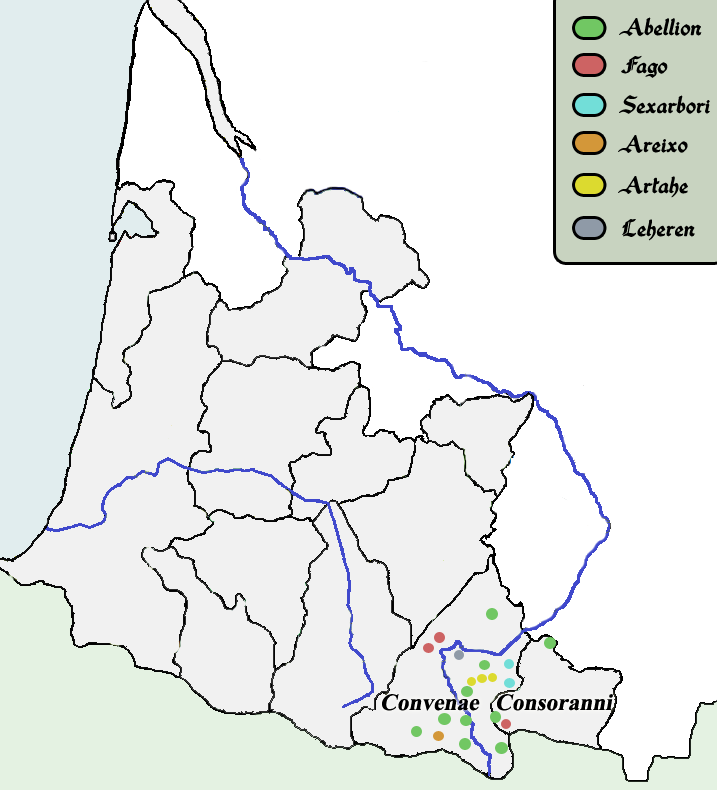

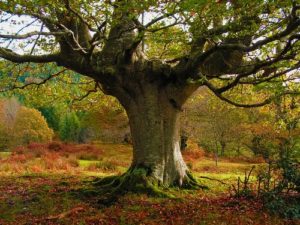
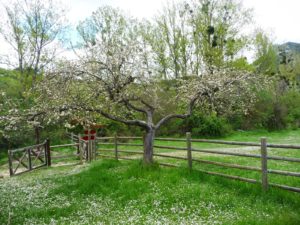
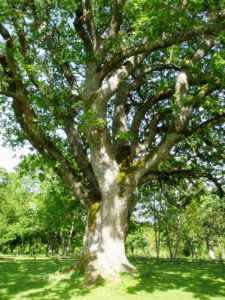
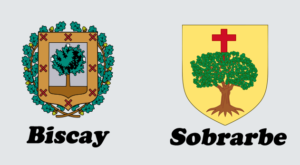
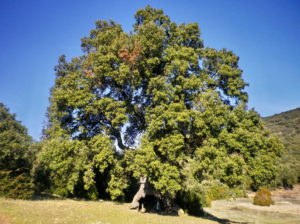
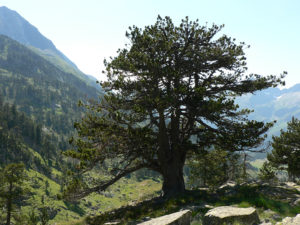
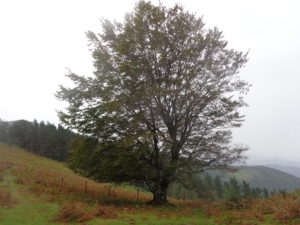
Recent Comments